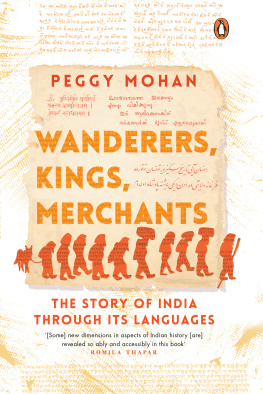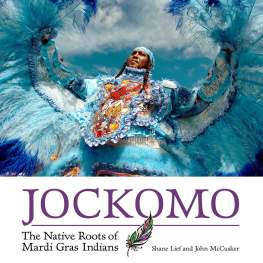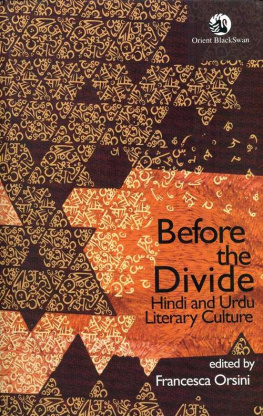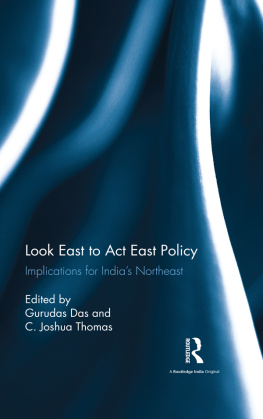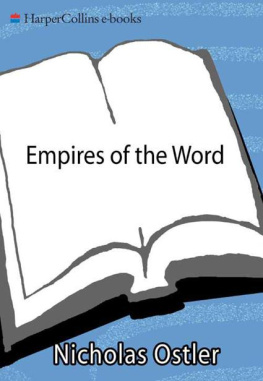Advance Praise for the Book
This book demonstrates the ways in which migrations bring about changes in the languages used by both the host population and those who come to settle among them. Studied analytically, languages reflect a range of historical changes. The subcontinental Indian languages, when analysed from a linguistic perspective, have indicated new dimensions in aspects of Indian history, some of which are revealed so ably and accessibly in this book, in addition to its providing new questionsRomila Thapar, professor emerita, ancient history, Jawaharlal Nehru University, New Delhi
Peggy Mohan takes the reader on a fascinating journey into the world of Indian languages. Weaving linguistics and history tightly together, she explores how waves of migration over millennia have left their mark on what we speak and how we speak. Wanderers, Kings, Merchants is an accessible account of how Indian languages may have evolved over time and it is a necessary read for anyone interested in our linguistic history
Tony Joseph, author of Early Indians: The Story of Our Ancestors and Where We Came From
Peggy Mohans Wanderers, Kings, Merchants is a highly welcome addition to historical sociolinguistics. Human languages are as mobile as the human communities that speak them, and the languages reflect the interactions of these communities across time and space. From the ancient migrations of peoples into the Indian subcontinent to the migration of Mohans own ancestors to Trinidad, Mohan weaves the accounts of migration with the changing forms of languages. Besides her astute linguistic observations, this book, unlike the typical books in linguistics, reads like a fascinating story of the languages and the communities, and in that respect, offers an enjoyable experience to a wider readershipMadhav Deshpande, professor emeritus, Sanskrit and linguistics, University of Michigan
This is the most fascinating book on historical linguistics ever written. It revolves around the narration of migration, settlement in a new region, intermarriages and the admixture of population leading to the genesis of diverse languages and dialects, each borrowing from the other and then further innovating to become independent languages. Mohan weaves her narration so vividly that each character in the play of language evolution and mixed languages appears in front of your eyes on the stage called India. Her findings reinforce the possibility of the existence of prehistoric language group/s similar to Austroasiatic/Munda in the north-west of Asia, which were in contact with pre-old Indo-Aryan community. She quashes several myths in this little work about the pidgins and creoles, the foremost one being that Nagamese is not a pidgin or even a creole, but the newest member of the Magadhan language family.
Peggy goes through the maze of settlements of Indo-Aryans exactly la mode Sherlock Holmes finding small pieces of evidencethat may appear perfunctory to ordinary historiansand identifies the root source of inner structures of the present languages and dialects. Her arguments in describing the evolution of creoles emerge as a silver lining in the scenario of dying languages.
This is one of the most lucid books on linguistic diversity that I have read in many yearsAnvita Abbi, professor emerita of linguistics, Jawaharlal Nehru University, New Delhi
To migrants:
our ancestors
our children
(India) was like some ancient palimpsest on which layer upon layer of thought and reverie had been inscribed, and yet no succeeding layer had completely hidden or erased what had been written previously.
Jawaharlal Nehru, The Discovery of India (1946)
:
iti varavida prahrnipua ta nibodhata
Thus the linguists have spoken;
Understand this wisely.
Pinya-ika
Diacritics and Symbols
In writing this book in the Roman script, I have used a number of diacritic marks for the sounds in the different languages.
Vowels: short
| a | pronounced like the u in the English word c u t |
| Hindi e.g. ka (get cut) |
| i | pronounced like the i in i t |
| Hindi e.g. pi (get beaten) |
| u | pronounced like the u in p u t |
| Hindi e.g. pul (bridge) |
| e | pronounced like the ai in w ai t |
| Hindi e.g. le (take) |
Vowels: long
| pronounced like the a in the English word c a lm |
| Hindi e.g. mr (kill) |
| pronounced like the ee in f ee t |
| Hindi e.g. p (beat) |
| pronounced like the oo in r oo t |
| Hindi e.g. phl (flower) |
| r | pronounced like the ri in ri g in north India |
| pronounced like the roo in roo f in Gujarat and Maharashtra |
| Sanskrit e.g. Rgveda |
| N | indicates that the previous vowel is nasalized, as in Portuguese po (bread) |
| Hindi e.g. hN (yes) |
Retroflex: with the tip of the tongue curled upwards to touch the palate
(Retroflex sounds essentially exist only in the Indian subcontinent, and have a ho po a o in the mouth sound, also referred to as r-coloration)
| pronounced like an English t with r-coloration |
| Hindi e.g. k (cut) |
| h | pronounced like an English t with r-coloration and a following h |
| Hindi e.g. hk (okay) |
| pronounced like an English d with r-coloration |
| Hindi e.g. a (stick) |
| h | pronounced like an English d with r-coloration and a following h |
| Hindi e.g. hona (to bear weight) |
| pronounced like an English n but with r-coloration |
| Malayalam e.g. veam (is required) |
| pronounced like the sh in English sh out but with a whooshing sound |
| Sanskrit e.g. (dawn) |
| pronounced like an English l but with r-coloration |
| Marwari e.g. pu (bridge) |
| pronounced like a but with the tongue flapping forward |

